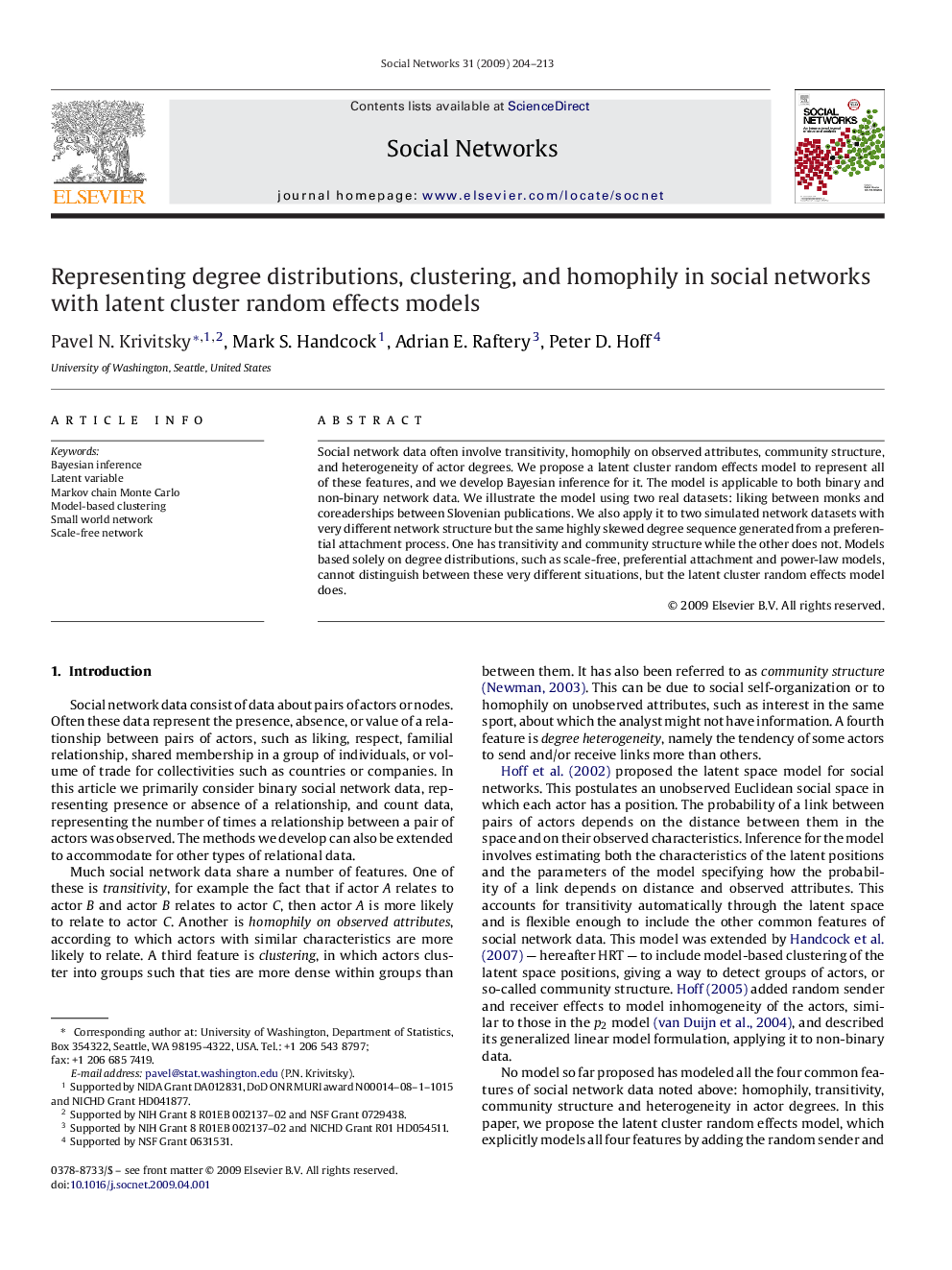| Article ID | Journal | Published Year | Pages | File Type |
|---|---|---|---|---|
| 1129413 | Social Networks | 2009 | 10 Pages |
Social network data often involve transitivity, homophily on observed attributes, community structure, and heterogeneity of actor degrees. We propose a latent cluster random effects model to represent all of these features, and we develop Bayesian inference for it. The model is applicable to both binary and non-binary network data. We illustrate the model using two real datasets: liking between monks and coreaderships between Slovenian publications. We also apply it to two simulated network datasets with very different network structure but the same highly skewed degree sequence generated from a preferential attachment process. One has transitivity and community structure while the other does not. Models based solely on degree distributions, such as scale-free, preferential attachment and power-law models, cannot distinguish between these very different situations, but the latent cluster random effects model does.
